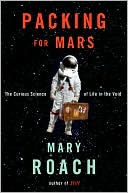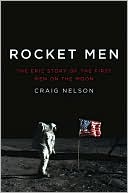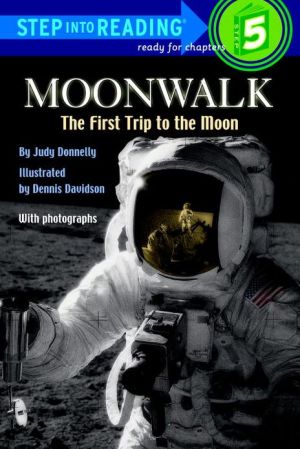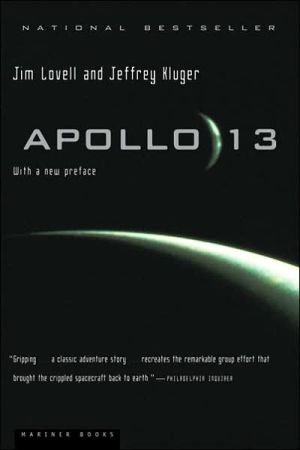Chasing Hubble's Shadows: The Search for Galaxies at the Edge of Time
Search in google:
Chasing Hubble’s Shadows is an account of the continuing efforts of astronomers to probe the outermost limits of the observable universe. The book derives its title from something the great American astronomer Edwin Hubble once wrote: “Eventually, we reach the dim boundary—the utmost limits of our telescopes. There, we measure shadows, and we search among ghostly errors of measurement for landmarks that are scarcely more substantial.” The quest for Hubble’s “shadows”—those unimaginably distant, wispy traces of stars and galaxies that formed within the first few hundred million years after the Big Bang—takes us back, in effect, to the beginning of time as we are able to perceive it, when the first discrete stellar objects appeared out of what has lately come to be known as the “cosmic dark age.” The information that is being gleaned from these dim sources—chiefly with the aid of Hubble’s namesake, the Hubble Space Telescope—promises to yield clues to many cosmic puzzles, including the nature of the mysterious “dark energy” that is now believed to pervade all of space.Jeff Kanipe is an independent science journalist, specializing in astronomy, cosmology, and planetary science. He is the author of A Skywatcher's Year.Chasing Hubble's Shadow is an account of the continuing efforts of astronomers to probe the outermost universe. The book derives its title from something the American astronomer Edwin Hubble once wrote: "Eventually, we reach the dim boundary—the utmost limits of our telescopes. There, we measure shadows, and we search among ghostly errors of measurement for landmarks that are scarcely more substantial." The quest for Hubble's "shadows"—those wispy, unimaginably distant traces of stars and galaxies that formed within the first few hundred million years after the big bang—takes us back, in effect, to the beginning of time as we are able to perceive it, when the first discrete stellar objects appeared out of what has lately come to be known as "the cosmic dark ages." The information that is being gleaned from these dim sources—chiefly with the aid of Hubble's namesake, the Hubble Space Telescope—promises to yield clues to many cosmic puzzles, including the nature of the mysterious "dark energy" that is now believed to pervade all of space. "Mr. Kanipe has provided a first-rate account of these mysteries and of how dauntless scientists go about trying to solve them."—Jeffery Marsh, The Washington Times "In Chasing Hubble's Shadows, the scientific journalist Jeff Kanipe takes us to the frontiers of today's astronomy, where astronomers use an armory of sophisticated tools and techniques to peer at dimly visible galaxies astonishingly far away and far back in time. Their ability to do so has been magnified greatly since the launch (or, rather, the repair a few years later) of the Hubble Space Telescope . . . The two great scientific mysteries of the age are that most of the universe seems to consist of 'dark matter' and 'dark energy,' the terms used to describe our ignorance of the nature of most of the energy that holds the universe together and the matter of which it is constructed, neither of which corresponds to the forms of energy and matter which we observe around us. Mr. Kanipe has provided a first-rate account of these mysteries and of how dauntless scientists go about trying to solve them."—Jeffery Marsh, The Washington Times"A fast-paced tour . . . [Kanipe's] enthusiasm is bound to excite and inspire."—New Scientist"Part history, part detective story, and even part travelogue . . . This book will be both instructive and enjoyable for anyone with an interest in the night skies."—Science News"A vivid description of how astronomers work and how ideas develop . . . Anyone curious about the mechanisms of our world will be thrilled by the book."—Patrick Petitjean, Nature“A broad overview of the current state of cosmology research, and a glimpse of some of the people and personalities involved in the field, all concisely summarized . . . The book is a great way to get up to speed on the current knowledge of, and challenges facing, astronomers in this field.”—Jeff Foust, The Space Review"A masterful synthesis of the work of many observational cosmologists, describing the searches for distant galaxies, explaining the possible limitations in the supernovae work, and integrating the optical studies with those of microwaves . . . [An] excellent book."—D. E. Hogg, Emeritus, National Radio Astronomy Observatory, Choice"Painting with a broad brush on a great canvas, Jeff Kanipe illustrates what we know and what we don't yet know about our cosmic origins. As you read Chasing Hubble's Shadows, you visit the great observatories where the chase is under way, meet the people who are doing the work, and learn how matter in our universe has been shaped by the forces of gravity and dark energy."—Robert P. Kirshner, author of The Extravagant Universe: Exploding Stars, Dark Energy, and the Accelerating Cosmos"If you want to know why the Hubble Telescope has gotten astronomers so excited and to learn how this mighty instrument helped astronomers to uncover the dark mysteries of matter and energy in the universe, take a trip back to the beginning of time with Jeff Kanipe's lively and informative book."—Donald Goldsmith, coauthor of Origins: Fourteen Billion Years of Cosmic Evolution"Kanipe interviews a number of observers and theorists, reports their opinions and experiences and gives a good look at both the culture and the key issues of modern astronomy . . . [G]reat stuff for astronomy buffs."—Kirkus Reviews"Current research on the earliest galaxies engages the interest of astronomy journalist Kanipe. Reporting that the science has been revolutionized by the image of the Hubble deep field, the first baby portrait ever made of the universe by the Hubble Space Telescope, Kanipe explains how astrophysicists are interpreting the ruddy 'blobjects' appearing in the picture. Their distance is a crucial question, and the basis for the answer (an astounding 12 to 13 billion light years) emerges in the author's explanation of cosmological measuring sticks such as supernovae. Of most interest to scientists, however, is the evolutionary connection between the protogalaxies and the beginning of the universe. Piecing together the first billion years of the cosmos is Kanipe's main focus. He starts with demarcations of the epoch, including a dark era in which thick gas blocked light; a 'reionization' era coinciding with the formation of the first stars; and then their conglomeration into galaxies. Due to Kanipe's clarity on technical points, general readers will be as excited by the discovery as cosmologists."—Gilbert Taylor, Booklist"The Hubble Space Telescope has been a wonderful tool because its location above the Earth's atmosphere has made possible astronomical views inaccessible Publishers Weekly There are at least 127 billion potentially observable galaxies in the universe, according to science journalist Kanipe (A Skywatcher's Year). The Hubble Space Telescope allows scientists to penetrate the distant shadows of the readily observable and to uncover traces of the earliest galaxies' birth. Kanipe follows in the footsteps of the great astronomer Edwin Hubble and his successors in this deeply enjoyable book, which is part memoir and part scientific detective story. Kanipe chronicles the development of deep space astronomy, traveling, for example, to the 10-meter telescopes atop Mauna Kea, Hawaii, and observing a galaxy in the making with astronomer Richard Ellis, who has already discovered at least 12 previously unobserved galaxies. By 2011, NASA will be able to probe the universe's dark ages when it launches the James Webb Space Telescope, which will offer the chance to gaze 180 million years back, to the births of many galaxies and stars. Kanipe's breathless writing conveys his own excitement over the revelations that new advances in astronomy can tell us about our planet and our place in the universe. 8 pages of color illus. not seen by PW. Agent, Regula Noetzli. (Feb.) Copyright 2005 Reed Business Information.
Hunting for Snarks 3The Race for the Most Distant Galaxies 25To the End of the Beginning 41Cosmic Canvas 55The Egg Before the Chicken 73It Stinks, but It Rocks 89Keck: Sailing Across an Unknown Ocean 109Peculiar Universe 127Distant Reflections in a Nearby Universe 147More of Everything 165Bibliography 183Acknowledgments 193Index 197








